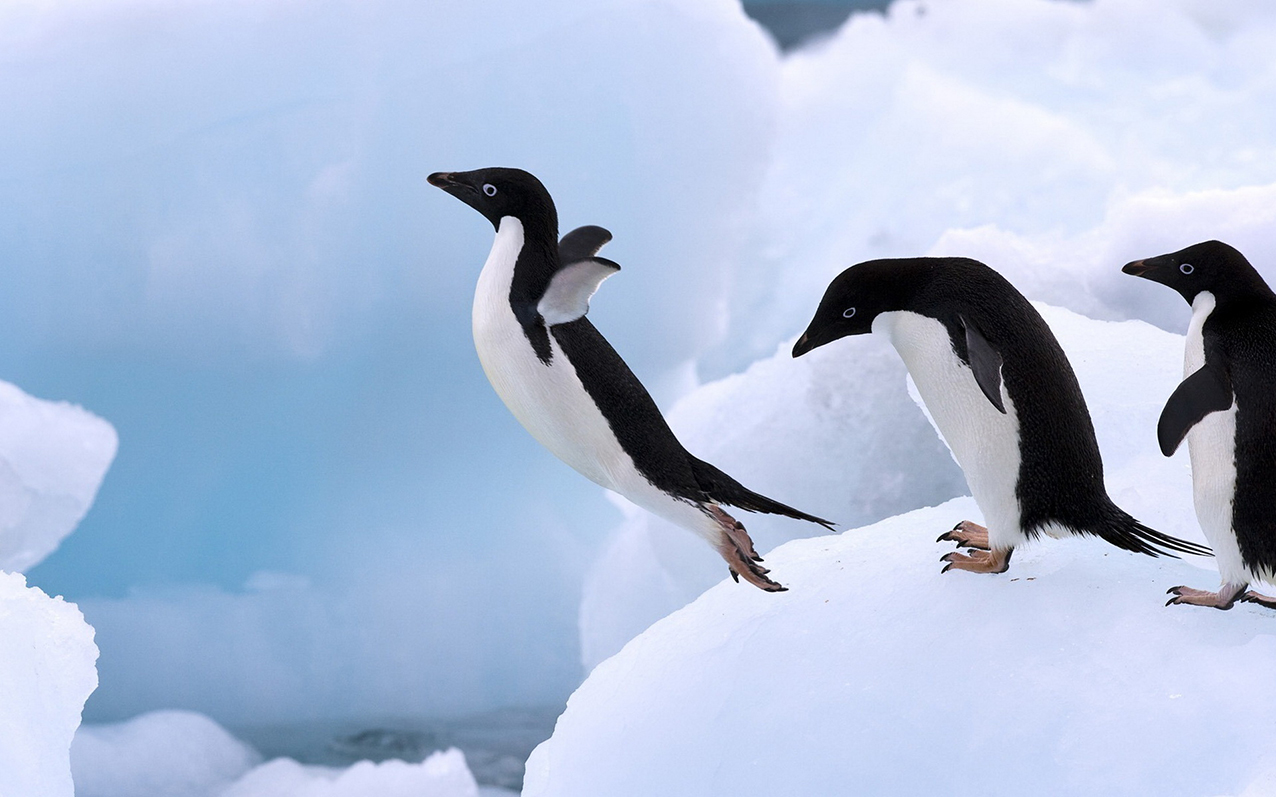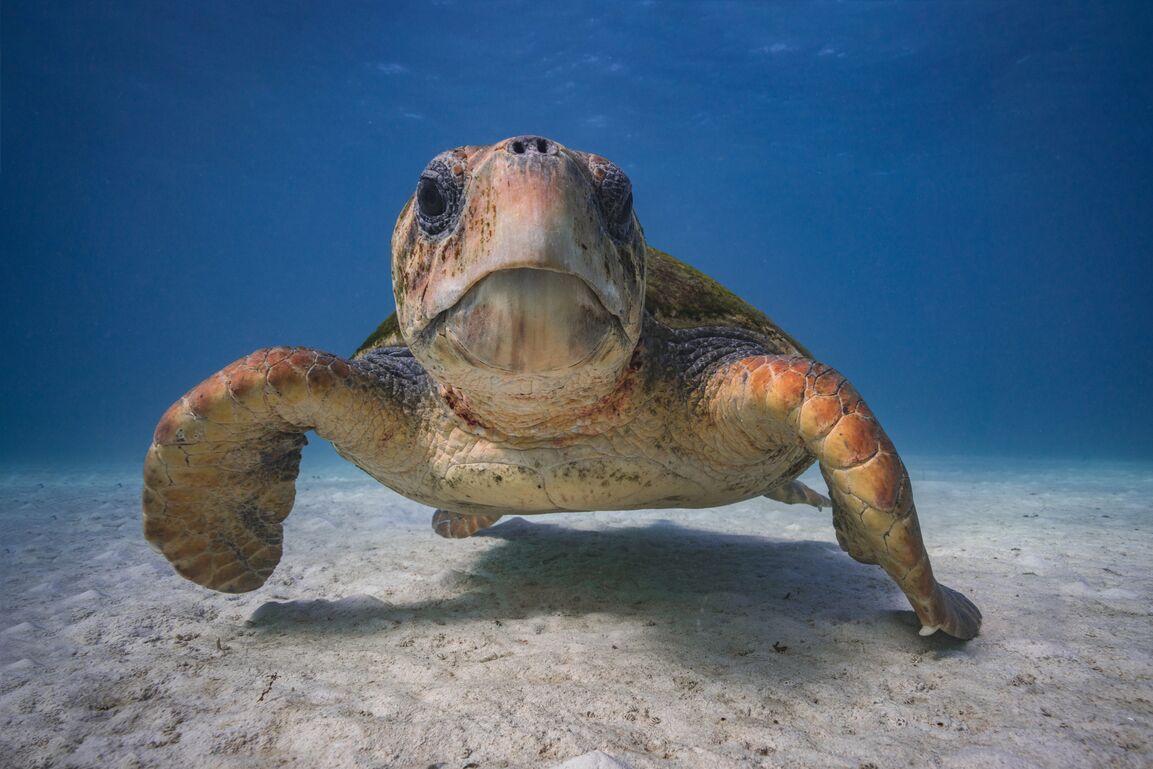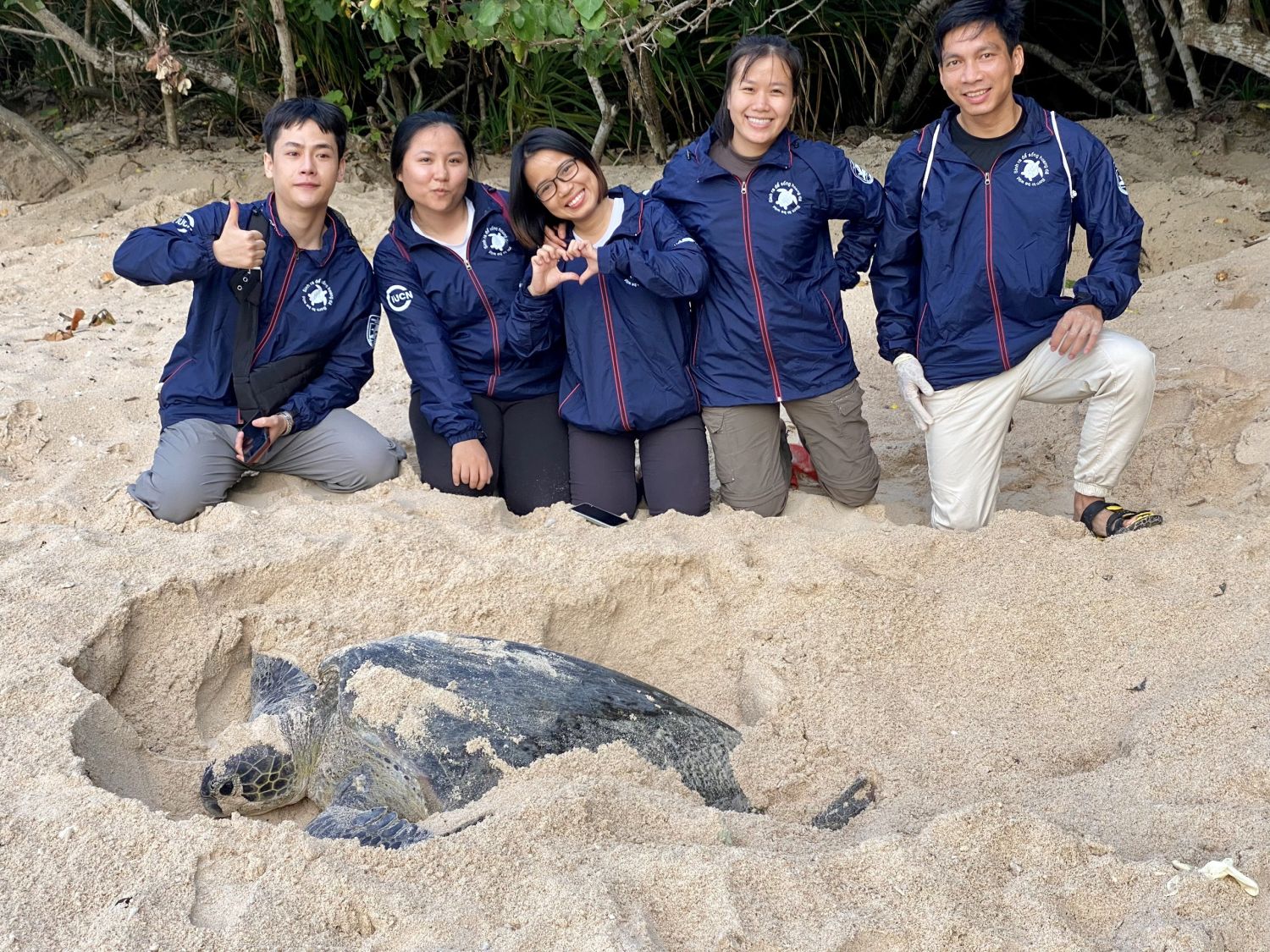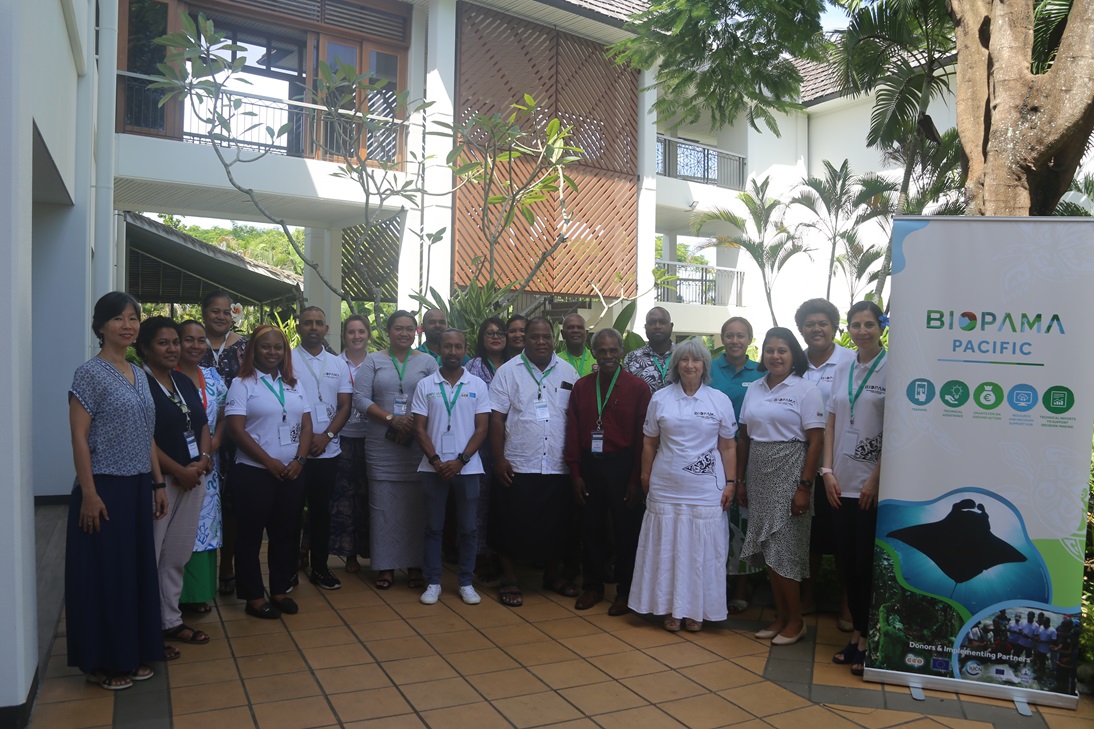Who is assigned to protect Antarctic ecosystems and their famous fauna? Latest news
The body responsible for the protection of Antarctica’s precious life, The Commission for the Conservation of Antarctic Marine Living Resources (CCAMLR), has just completed a special meeting in Santiago, Chile. IUCN participated as an observer promoting independent science and urging delegates to move forward with developing a roadmap for establishing Marine Protected Areas in line with globally adopted targets.

Most of the people on this planet will never get a chance to visit the Antarctic and witness its incredible ice formations and the iconic emperor penguin, and an array of other species unique to the continent. Even if we do not get to experience this fascinating continent, we already have a strong relationship with Antarctica and our climate.
Antarctica and its living resources is not exempt from the impacts of climate change. In fact, the polar regions are heating up much faster, and in some places more than five times faster than any other part of the ocean.
The Commission for the Conservation of Antarctic Marine Living Resources (CCAMLR) is the international body responsible for safeguarding Antarctica’s ecosystems and their functions. Its 26 Member countries and the European Union meet each year in October in Hobart, Australia, to make decisions on issues such as the closure and opening of fisheries in Antarctica, total allowable catches (TACs), and the designation of marine protected areas (MPAs).
A large number of peer-reviewed scientific papers underline the importance of Antarctic MPAs. The science that is currently available allows us to act now in all planning domains, particularly to urgently protect krill and associated species, up to top predators,” said Guillermo Ortuño Crespo, Co-Lead of the IUCN WCPA High Seas Specialist Group.
A third special meeting (CCAMLR-SM-III) has just concluded in Santiago, Chile, where member states and observers gathered to discuss:
- How to progress marine protected area (MPA) proposals that have been made to protect vital areas of the Antarctic;
- How the adopted general framework for the establishment of CCAMLR MPAs could be improved;
- Best practices and evaluation of lessons learned, and effectiveness of the overall conservation measures related to MPAs already adopted by CCAMLR.
High seas marine protected areas created with concrete objectives, management plans, and enforcement protocols are more likely to become real tools for biodiversity protection. Well-developed and recognised methods for designing and managing systems of protected areas, such as the IUCN Green List can be an enabling tool” says Thierry Lefebvre, Head of IUCN delegation and IUCN Green List Programme Manager.
Establishing Marine Protected Areas (MPAs) in the Southern Ocean
Decisions to establish MPAs in the convention area are made by consensus agreement of its Members. CCAMLR has been successful in reaching consensus agreements on several issues related to fisheries management but many more conservation-oriented measures like establishment of marine protected areas have proven more challenging. Particularly to make progress on the implementation of a network of marine protected areas and actions to climate impacts, potentially hamper its effectiveness to respond to the threats of climate change. A mechanism to facilitate agreement in the absence of consensus to accept a proposal to help progress the pending MPA proposals is needed.
An agreement on a roadmap that would advance the establishment of a representative system of MPAs within the convention area was not reached by CCAMLR parties at the recent special meeting held in Chile. This impasse delays the urgent advancement of marine conservation efforts in 10% of the global ocean, and the general obligation under the United Nations Convention on the Law of the Sea (UNCLOS) to “protect and preserve the marine environment” (Article 192).
Global target of protecting at least 30% of our Ocean
The establishment of a system of MPAs in the Southern Ocean would work towards achieving the Kunming-Montreal Global Biodiversity Framework (GBF) Target 3, to protect at least 30% of land, coastal areas and seas, which includes the High Seas.
CCAMLR’s pioneering role in creating MPAs in international waters should be acknowledged, and the High Seas Biodiversity (BBNJ) Treaty adopted by consensus on 19 June 2023 further reinforces the significance of conservation-oriented, ecosystem-based management in areas beyond national jurisdiction,” explained Minna Epps, Head of the IUCN Ocean Programme
The High Seas Biodiversity Treaty commits to not ‘undermine relevant legal instruments and frameworks and relevant global, regional, subregional and sectoral bodies’ but at the same time seeks to strengthen the performance of existing bodies, including CCAMLR.
IUCN expresses its gratitude to the CCAMLR Secretariat, the Commission Chair, and its member states for allowing observers, including IUCN to actively participate in the meeting.
IUCN is committed to supporting the work of CCAMLR and all States towards the implementation of the roadmap for developing a representative system of MPAs based on the best available science and within the framework that describes the objectives and requirements for establishing MPAs” added Epps
Key messages
- Antarctic ecosystems have a primary importance in planetary stability for climate and nature. Southern Shelf MPA, are particularly relevant in the context of the Antarctica.
- MPAs must be established based on the best available scientific evidence, as a precautionary measure, rather than delaying the process to await more scientific research and information.
- IUCN supports the establishment of effectively managed MPAs in and across all CCAMLR planning domains, as part of a wider conservation and management strategy that integrates ecosystem-based approaches.
- MPAs can serve as reference areas for scientific research and monitoring, providing a refuge for marine species, also benefitting the area outside of the MPA; altogether contributing to the resilience against climate change of the whole ecosystem.
- A system of MPAs would also help preserve the region’s function as a vital natural carbon sink.
- CCAMLR can actively lead forward movement of the Global Biodiversity Framework (GBF) targets such as Target 3, which aims to conserve at least 30 per cent of global marine areas, as well as the BBNJ Treaty goals, while keeping its own commitments to marine spatial planning and protection of Southern Ocean species, habitats and ecosystems.
- Multilateral collaboration is key and must be employed in a true spirit of cooperation by all CCAMLR members.



